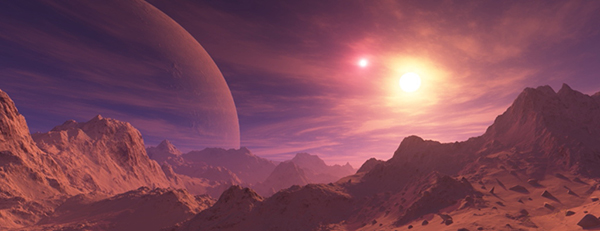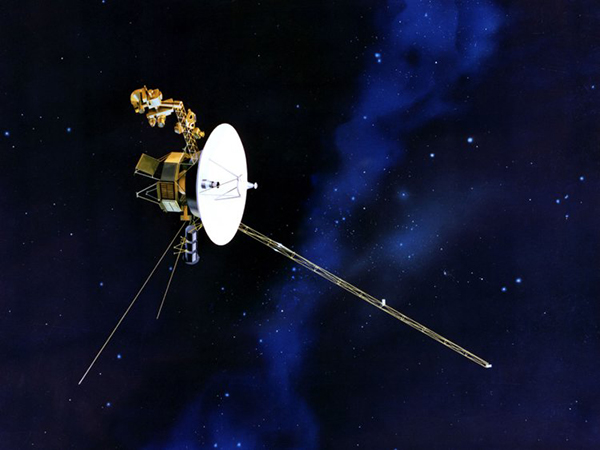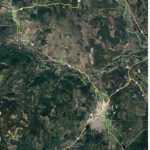Home »

Eager Hill and The Three Worlds of the Morning Star
By Dan Hicks
As November rolled into December, Mercury was our Morning Star – an apparition in our southeastern sky – rising two hours before the sun and, when I saw the bright little cannonball planet high in the nautical twilight from the Eager Hill trail on November 29, it had a self- illuminated stellar companion – Zubenelgenubi in the seventh zodiacal constellation – Libra (the scales).

So my dawn horizon consisted of three individual worlds – our 0.6 magnitude innermost planet, eight light-minutes away; the dimmer 2.75 magnitude star Zubenelgenubi, way out yonder in space and time – 76 light-years distant; and below these two sky-worlds was the slowly brightening stratus cloud and murky silhouetted terrain of a third world – our very own Planet Earth.
In the wider expanse of the whole southeastern sky, Mercury was in a rightward diagonal alignment along the zodiac with Planet Mars and bright star Spica. Despite the minus 20 C morning temperature, this Eager Hill dawn scene received some unprecedented publicity in the first ever live astronomical report from the Cranbrook Community Forest; having captured Mercury and Zubenelgenubi with my tripod-mounted Canon SLR, a cellular call to the Cranbrook radio station that had already given Mercury’s apparition some publicity seemed achievable. And so, I was able to inform 107.5 FM’s Dennis Walker and his morning audience that in the “cold” dawn “Mercury was high and prominent – just like it’s supposed to be.”
Back in the day, CBC Radio Kelowna once heralded astronomical phenomena with interviews from learned Kelowna stargazers, but never featured any such live reports. Though my attempt to rally a few hardy Cranbrookers to share this splendid array of planets and stars from the same prospect the following morning elicited a rather chilled response, as I saw on the dawn of December 1, Mercury was plainly visible from central Cranbrook, rising over Mount Baker’s east slope at 7 MST. The planet would have risen above Baker as late as December 10, but continuous morning cloud ensured that December 1 was its farewell appearance (for details on Mercury & Spica – search “cannonball mercury” on this website).
My “three worlds” appellation is a simplification of the Morning Star scene, the two light- reflecting planets are simple schemes compared to the faraway star whose appearance as a solitary pinpoint of light is an illusion – its fantastical design is really one of worlds within worlds. Alpha Librae, Zubenelgenubi’s modern International Astronomical Union (IAU) moniker, is a quintuple star system. Alpha Librae A and Alpha Libra B (Lib A & B) rotate around each other as binary stars at a distance of 31 light-days (Dwarf Planet Pluto, demoted by the IAU in 2006, is 5.5 light- hours from our sun), but each is in turn a spectroscopic binary – a companion star revolves around the principal star so closely that its presence is revealed only in spectral starlight.
Meanwhile, KU Librae revolves around the Lib A & B pair at a distance of 3.3 light-years.
Lib B is the primary player in the Zubenelgenubi system, a blue-white subgiant with an apparent magnitude of 2.75, but an intrinsic magnitude of 0.9 which makes it 36 times brighter than our sun which has an intrinsic magnitude of 4.8 (like the earthquake magnitude scale, the stellar luminosity magnitude scale is logarithmic).

Circumbinary planet Kepler-16b orbits the Kepler-16 binary star system; one of 2,662 planets detected by the NASA Kepler Space Telescope as it monitored 530,506 stars in a little square patch constituting only 0.25% of Earth’s entire sky – in Cygnus (the swan) – over 9.5 years, from 2009 to 2018.
Zubenelgenubi’s binary star pair could possibly have conventional planets orbiting Lib A & B individually, and circumbinary planets orbiting Lib A & B’s binary orbit.
A distance of 76 light-years through the vast void of interstellar space may mean nothing to the Star Wars gang in their far-far away fantasy galaxy , but to us out in the Perseus Arm of our Milky Way Galaxy – it is rather daunting.
Rocketing off Planet Earth in September 1977 and subsequently accelerated outward by successive gravitational boosts, first from its home planet, then from outer gas giants Jupiter and Saturn (aligned at the time), NASA’s Voyager 1 spacecraft slipped our sun’s heliosphere and ventured into interstellar space in August 2012 (35 years later); now 20.6 light-hours away and receding from us at 17 kilometres per second – it has distinguished itself as being the furthest out and fastest robotic probe humanity has ever launched into outer space (& we remain in communication).
But were Voyager 1 bound for Zubenelgenubi – about 1,300,000 years would pass before it finally arrived with salutations from Planet Earth. Alternatively, were this little-engine-that-could journeying to our closet stellar neighbours – the Alpha Centauri A & B binary pair, 4.3 light-years distant (& not visible from our northern latitude), the time entailed would be a mere 70,000 years – 1/19th that of a more ambitious Zub excursion. However, as I suppose everyone knows, Voyager 1, angled 35 degrees above our ecliptic plane (ie solar system plane), is headed toward the constellation Ophiuchus (the serpent- holder), so neither the Zubenelgenubians nor the Alpha Centaurians will be greeting it, but perhaps, in the remote reaches of unfathomable time, open-minded Ophichuians will play its gold-plated copper audio-visual disc and hear a cheery “hello” from “the children of Planet Earth” (together with some Chuck Berry). Zubenelgenubi itself can be telescopically resolved into its two principal components and, reimagining Cranbrook in 2070 – a more easily conceived 51 years into the future, I envision a public viewing opportunity being arranged from Eager Hill via a joint college-community forest collaboration.
The stargazers’ hilltop motto might well be “ad culmina tum ad astra” – to the peaks – then the stars – but the more haunting question is whether or not mankind will ever rendezvous with any stars.
In November, our local REP repertory theatre presented the 1982 movie Blade Runner; set in Los Angeles of November of 2019, it imagined a dreary dystopian future for our species – threatened by the humanoid robots our alphas had created, but the movie’s prologue scroll noted that many of us had relocated to live happier lives in “off-world” colonies. Ironically, from an actual 2019 perspective, we seem no closer to having second chance extraterrestrial colonies than we did in 1982.
Released this year, a plot point in the movie Ad Astra was of the commander of a galaxy-monitoring spaceship in an outer solar orbit, driven to murderous insanity upon realizing that we were indeed alone among the stars – a one of kind intelligent life form in the universe – the bleak Fermi Paradox was confirmed as a cosmological reality; for any intelligent intercourse anywhere – we were eternally stuck with none but ourselves (damn). However, before losing his mind, had the distraught commander contemplated the vastness of the void separating us from all the other stars, he may well have concluded that even were it crackling with intelligent chatter, time and distance precluded an interstellar exchange of ideas, much less any actual visiting. Meanwhile, little robotic Voyager 1 will soldier on forever through the Milky Way, never to give the slightest thought to any matters of cosmic consciousness. As futurist movies, both Blade Runner and Ad Astra are praiseworthy for their thought provoking aspects, but are not necessarily denizens of the great movie Parthenon.

Meanwhile with Christmas upon us, Cranbrookers have more immediate concerns than strange worlds in the starry heavens above Eager Hill; injudicious shopping, charge-card indebtedness, schlocky seasonal movie overexposure, insufferable in-laws, terrible travel weather, Star Wars lineups, and never getting all the stuff we wanted – these vexations are more likely to be harbingers of psychosis than atomic physicist Enrico Fermi’s 1950 cosmic query – “where is everybody?” Were the Star of Bethlehem to reappear, our midwinter skies would likely be overcast, but the early evening of December 28th – the Fourth Day of Christmas and the day of Cranbrook’s Christmas Bird Count – holds the possibility of a lovely natural night sky scene which may briefly banish holiday stress. The waxing crescent moon and the planet Venus, the two brightest natural luminaries after the sun itself, will pose together in our southwestern sky at dusk (see chart); a pleasant late December sight if you can find a slightly darkened refuge where our omnipresent light pollution is somewhat diminished. But a visit to Venus herself – Roman goddess of love and beauty – would mean not only that your Christmas turkey would be instantly baked, your goose would be terminally cooked as well – as you were crushed by the thick Venusian atmosphere of carbon dioxide; she makes Dante seem sanguine in his most hellish imaginings – her divinely radiant beauty is best admired from afar, and having Luna as her companion in the sky is a pairing seen only from our very own Planet Earth – a heavenly pleasure for which we should be most grateful.
Sources: CBC Radio Quirks & Quarks, heavens-above.com, space.com, universeguide.com, & wikipedia.org.
Lead image: Planet Mercury, star Zubenelgenubi, and the Rocky Mountain Trench, looking southeast from the Eager Hill trail; November 29, 2019, 07:10 MST (Canon EOS 70D on tripod, manual focus, 100 mm, f5.6, 1/6 second, & ISO 6400). Photo by Dan Hicks







